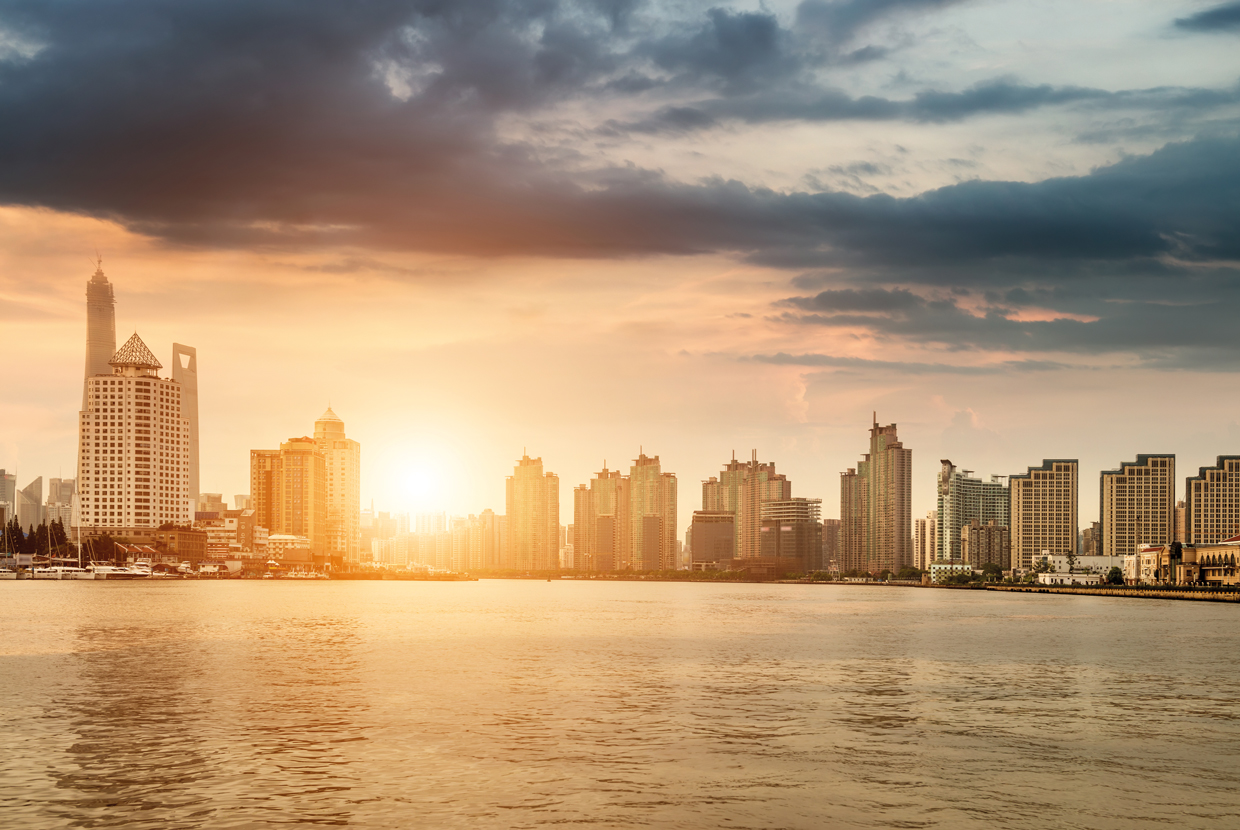Those outside of India seem more optimistic about its trade sector than those in the country, as Finbarr Bermingham reports from Mumbai.
At a recent event in Hong Kong, GTR was present as an economist touted India as “the only remaining BRIC in the wall”. The comment was flippant: China is still growing strongly, if not as strongly as many would like. India’s estimated 7% growth for 2015, however, is surely the envy of the Russians, who saw their economy contract by 3.4% last year, or of Brazil, where the economy is flat-lining.
On a visit to Mumbai, it was clear that the Hong Kong economist’s zeal was not present in abundance on the ground. At a meeting in his office in the city, one senior trade banker told GTR that if he was positive, it was only because things couldn’t get any worse than they have been for the past few years. It was an unexpected remark, but further conversations revealed outlooks as complex and disparate as Mumbai itself.
Some think the Indian economy is in great condition, others are in despair. Some Indians are delighted with the progress Narendra Modi’s governance has overseen to date, but many are underwhelmed. Most, however, are willing to give him the benefit of the doubt. After all, in the world’s largest democracy, getting things done isn’t always easy, and it’s never quick.
Price wars
Views in the banking sector differ too, but few of the people that GTR speaks with appear jubilant. “From a trade finance bank perspective, it’s a tough market,” says Ashutosh Kumar, regional head of transaction banking at Standard Chartered, the largest foreign bank in India. “Banks want to focus on the top end of the market, because from a credit risk perspective they’re the least stressed. This phenomenon played for all of 2015 and continues now. As things play out there’s a certain extent where demand goes down, banks’ risk profile adjusts and things will flatten and grow from there.”
Another banker, speaking off the record, complains that local banks are virtually giving money away, such is the low pricing of trade finance. Meanwhile, a representative of ICICI Bank says that he wished the price was lower still. Subjectivity rules, again.
“They’re gloomy because they have to bite the bullet one day,” says Yaduvendra Mathur, the chairman of India Exim dismissively, of India’s commercial banking sector. His office is elaborately done out with traditional Indian furnishings and he delights at showing GTR the view of the Gateway to India from the back window. It’s in stark contrast with the clinical confines of most banks in Mumbai (and everywhere else in the world, it would seem). His frankly shared views contrast just as strongly.
He explains that Indian banks were encouraged to lend into sectors such as steel and shipping, which have both gone belly up, and are now left with books full of stressed assets. The downturn in the steel sector, he says, is not only a product of the Chinese slowdown, but a victim of Chinese policy. Having had their fingers burnt, the banks are now focusing on top-tier clients only, mirroring the trend of de-risking we’ve seen across Asia for the past year or two.
“You have some of the finest steel plants in India which are now running at 20% capacity, because the Chinese, Koreans and Japanese are coming into the Indian market below the cost of production. They have deep pockets. China can use its current account surpluses they’ve built up over the last two decades to decimate other productive capacities. I won’t use the word ‘terrorism’, but this is warfare,” he says.
Aashish Pitale has, in his role as group treasurer of the commodities group Essar, witnessed the steel crisis first hand. “Two or three years back, China was consuming 60% of global steel production because there were so many projects, but demand has fallen off a cliff. A lot of entities had set up capacities assuming that demand was going to grow. That is not happening and the facilities are already set up. So the supply that was there is looking much bigger,” he tells GTR.
Essar has been spared the worst of the crisis through a policy dating back seven years of focusing on maturing its own facilities, rather than bringing new ones online. Equally, the company has been one of the beneficiaries of the price war in the trade finance sector, as Pitale explains: “On the short-term borrowing front, for my trade requirements, which are pretty substantial, I’m currently borrowing anywhere between US$800mn and US$1bn every month. That’s primarily buyer’s credit. Then the pricing has steadily gone down over the last three years or so. It started at Libor +100 three years ago, came down to Libor +70, then Libor +40 and late last year we did a few deals at Libor +27,” he says.
Lost potential
The global downturn has been borne out in India’s raw data too. While its growth may still be comparably strong, India’s exports have been in freefall for more than a year now and contracted again by 13.6% in January. In the same month, imports fell by 11%. In large part, the poor trade performance can be blamed on the global economic slowdown. The demand simply isn’t there for lots of India’s produce.
Another huge factor, as it always seems to be nowadays, is the commodities slump. Oil is both India’s biggest import and export. It accounts for 38% of total imports and 19.6% of exports. So the falling oil price has a drag on trade figures going in and out of the country, which goes some way to explaining why they’re both so low.
Manufacturing is also an issue. “Things like engineering products have had significant decreases in orders. There’s an underlying problem that manufacturing hasn’t rebounded to the extent they’d like but it’s still better than it was two years ago. The data we see for manufacturing is still showing that it’s up over the last six months, about 5% year on year. It’s been very volatile, but India’s industrial production has always been volatile,” Rajiv Biswas, Asia Pacific economist at IHS, tells GTR.
But many of the issues affecting Indian trade are structural. The picture painted by Ajay Sahai, the CEO of the Federation of Indian Exports Organisation (FIEO), is one of potential, but of a historic failure of translating that potential into real world success. India has the largest technical manpower in the world, he says, but just 14% of the labour force gets training, compared to 65% in China.
India has more trade agreements than most countries, but has the lowest utilisation of its trade deals in all of Asia (just 3.4% of the potential of a trade deal with Malaysia is being reached, with 22% for the agreement with Japan coming to fruition). In India, 14% of GDP goes on logistics costs, compared to 8% in the US. It costs three times more to transport cargo from Lucknow to Mumbai than it does to get it from Mumbai to Western Europe.
Glacial progress
When Modi came to power, he did so with a promise to make many of these problems better: to make India a better and easier place to do business for domestic and international firms. This will eventually, it’s hoped, be translated into prosperity for all. Many of these issues – poor exports, infrastructure deficit, endless red tape, attracting investment – were high on his agenda, but progress is slow.
Everybody seems to agree on the need for a goods and services tax (GST), but parliamentary differences have stalled its roll-out. “In order to promote trade, the GST bill is very important,” says Kumar. “While India is one country, the current regime of taxation makes it look like you have 29 countries in India. The moment goods cross from one state to another, there may be differential taxation obligations. It also results in delays. You reach a border, the truck is waiting, it has to clear all those things and move. GST creates one framework of uniformity and the speed and flow will improve.”
The issue of land reform was also high on Modi’s agenda when he took office, but has had a slow gestation process ever since. Land reform is a concurrent subject, which means it can be decided at a state or central government level. Modi failed to get an agreement centrally, so has passed it down to states in the hope that they can create land reform bills on a local level, which will make it easier to invest in India.
The effort has been praised by some and noticed by investors – at least from one part of the world. China’s Wanda Group, a real estate giant, is set to invest US$10bn in India over the next 10 years in the construction of industrial townships. Their manufacturing compatriot Foxconn plans to set up 12 manufacturing facilities in the country by 2020, beginning with a US$5bn investment in a factor in Maharashtra announced last year. Progress is once more slow, but investment is beginning to trickle in.
In his new book Asian Megatrends (discussed below), IHS economist Biswas compares Modi’s task to John F Kennedy’s ambition of putting a man on the moon. Kennedy didn’t use the word “eventually”: he said he’d have an American there by the end of the 60s and by the time the decade was out, pictures of Armstrong’s first steps became the most iconic of that time. Modi’s plans may have been stalled, but he is still set on hitting his deadlines. Progressing with huge projects such as the 100 smart cities and the Delhi-Mumbai Industrial Corridor show that despite the challenging times, his ambition is still apparent, giving fuel to optimism abroad that Modi can make India the trade powerhouse the rest of the world is looking for.
India’s SMEs face lending challenges: A Q&A with Chandrakant Salunkhe, president of the SME Chamber of India
GTR: What are the three major challenges facing Indian SMEs in 2016?
Salunkhe: Tough competition from local and overseas companies, an economic and industrial slowdown leading to a reduction in new orders, and not getting adequate and timely credit from banks – banks have not reached their lending targets for the SME sector.
GTR: What percentage of SMEs export? How can this be boosted?
Salunkhe: Indian SMEs account for around 34% of national exports. In the case of items like readymade garments, leather goods, processed foods and engineering items, the performance has been commendable both in terms of value and their share with the SME sector.
Promotion of SME sector exports should be accorded a high priority by the government. Some areas that could be improved include: simplification of procedures, incentives for higher production of exports, preferential treatment to SMEs in the market development fund and simplification of duty drawback rules.
GTR: Are banks and the Indian government sufficiently supportive of the country’s SMEs?
Salunkhe: SMEs face acute difficulties for obtaining adequate and timely bank finance. Presently bank finance is not an affordable option since the required finance is not available. The government needs to provide credit directly from state-owned banks to SMEs, to offer liquidity incentives to commercial banks, offer interest rate subsidies, and to extend their loan guarantee programmes.
Away from financing, the government should focus on improving the bargaining position of SMEs vis-à-vis large corporations of which they are suppliers. This should include measures such as providing legal assistance to suppliers negotiating contracts, providing legal protection against unfair practices, shortening payment delays for local suppliers through legislation of fiscal incentives and encouraging the provision of financial support by big firms to their SME suppliers through fiscal incentives.
Asian Megatrends
Ahead of the release of his new book, Asian Megatrends, Rajiv Biswas, Asia Pacific chief economist at IHS, speaks to GTR about what we will be seeing over the next 20 years in the world’s trade hub.
GTR: One of the key trends in your book is the demographic shifts that inspire the migration of production hubs. What is the end game for this? Surely, there will eventually be no more low-cost hubs to move to?
Biswas: There is a natural progression: lower-end manufacturing shifted from Japan to Korea and Taiwan, then China. Now it’s shifting to Southeast and East Asia and this will continue for the next 20 or 30 years, particularly Vietnam, Myanmar and also the Philippines and Indonesia. The latter two haven’t yet become big hubs for manufacturing, but I hope their governments will see the opportunities. Certainly Jokowi [Indonesian president] is focusing on it now, so Indonesia is heading in that direction, but a lot of reforms are needed.
Over the next two or three decades there’s still a lot of runway for that shift to happen without making too many problems for Asia. In all, South Asia still has huge populations and a lot of underemployed labour. Obviously countries like China are moving up the value chain, which is a very disruptive transformation process. Beyond 2035-2040, then the question arises: where to from here? Will the manufacturing shift somewhere else? Over the next few decades I can still see enough leeway for Asia to absorb the shifts. After that it’s far beyond the timelines – but it’s a very valid question.
GTR: Which of the Asian Infrastructure Investment Bank (AIIB), the Silk Road Fund and the New Development Bank (NDB: also known as the BRICS Bank) do you think has the most potential to succeed?
Biswas: The AIIB is in very good shape. It has a good governance structure, 57 member countries, many of which are from Europe… relatively developed countries with sophisticated financial regulation. Their governance structures will bring strength to the AIIB. They’re also bringing capital, as is China. All of this is already in place, it started operations this year, so it’s on track. It’s got diverse funding and good governance. For those reasons, it has a head-start and should be able to hit the ground running.
The Silk Road Fund has also already started, but is purely Chinese funded. That may be an open issue: what will its governance structure be like? What about its vulnerability? What if China starts getting concerned about its foreign reserves? There are more issues around how much the Chinese governance will want to do things: it’s depending on only one country, so is more vulnerable to political issues.
The third is the NDB: I think that’s the one that could face the most challenges. Two of the BRICs are in recession: Brazil and Russia. In the long term I think the concept remains valid, but the economic problems mean they won’t be focused on the NDB. But if it increases membership and adopts a global governance structure, it could flourish.
Will they compete with the World Bank Group? I don’t think so. Many of the AIIB members are members of the World Bank and the ADB. It’s not in their interest to create conflict. There have been lots of discussions to make sure they’re working together. I see it as a co-operative model, but not necessarily working together all the time.
GTR: You use more moderate language about China’s slowdown than others. Do you think that the world has to get used to China’s “new normal”, rather than worry about China itself?
Biswas: That’s very much the case. We’re in a trajectory of moderating growth in China, not just the 6.5% over the past five years, but beyond that, it will slow even further to below 5% by 2030. It’s a normal transition for any fast-growing developing country moving from low income to upper-middle income. You wouldn’t expect them to keep growing at those high rates forever.
In the last seven years since the financial crisis, one-third of global growth came out of China. Though it is now a much bigger economy than seven years ago, this is moderating. The lift it will give to the global economy will be more muted than it was over the past few decades. But the world does have an adjustment process to go through.
One of those adjustments will be that China will be a consumer-based society rather than low-cost manufacturing society. It will no longer be the source of demand for mineral commodities of the past 20 years. The shape of demand is shifting towards services, which creates new opportunities there. Increasingly it will become an importer of low-cost goods.
I’m still quite positive about the impact of China on the global economy over the next 20 years. But there’s a transition taking place, and things will be less dependent on just China and more the three emerging market engines of Asia: China, India and Asean.






